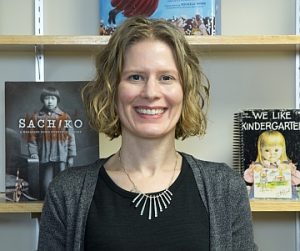 OPB readers, friends, and fans, what better way to wrap up 2019 than getting to know Carol Hinz, Editorial Director of Millbrook Press and Carolrhoda Books at Lerner Publishing Group? Her Twitter bio gives a lot of extra insight into who she is and what she’s about: “Also knitter, baker, ballerina, and wrangler of two small humans.” Talk about some pithy bio data, right?
OPB readers, friends, and fans, what better way to wrap up 2019 than getting to know Carol Hinz, Editorial Director of Millbrook Press and Carolrhoda Books at Lerner Publishing Group? Her Twitter bio gives a lot of extra insight into who she is and what she’s about: “Also knitter, baker, ballerina, and wrangler of two small humans.” Talk about some pithy bio data, right?
Since OPB is all about underpromising and overdelivering, here are three more Carol Facts to enjoy.
- First book publishing job was an internship at Graywolf Press.
- Favorite color? Blue (in all shades and hues).
- Most unusual airplane carry-on item? She brought her figure skates to the NCTE conference in Baltimore at the end of November so she could skate at the rink that’s along the harbor. Carol says, “It was totally worth the effort—and all the funny looks I got when people at the conference found out I’d done it!”
With that, let’s get to the Qs and As!
- Press Websites: www.LernerBooks.com/Pages/Millbrook-Press and www.Lernerbooks.com/Pages/Carolrhoda-Books
- Twitter: @CarolCHinz
- MS Wishlist: www.mswishlist.com/editor/CarolCHinz
RVC: You ran into a pre-career crossroads in high school—science and English. We know which choice you made (obviously!), but what appealed to you so much about science?
CH: I’ve always been a curious person, and I think my science classes and my English classes fed my curiosity in different ways. With science, I loved finding out more about the ways the world—and the universe—works, and at least at the high school level, I liked that the questions I was grappling with had definitive answers. There’s something comforting about being able to follow a procedure or a certain line of thinking and come up with a consistent result.
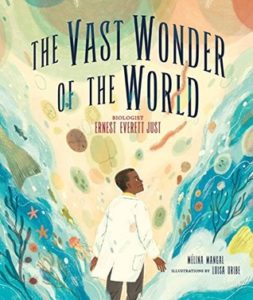 RVC: An example of that scientific curiosity appears in the range of books you’ve edited, like The Vast Wonder of the World: Biologist Ernest Everett Just and If You Were the Moon, or Dazzle Ships: World War I and the Art of Confusion and One Plastic Bag: Isatou Ceesay and the Recycling Women of the Gambia. What’s an unexpected topic or two you’d love to deal with via a book at some point?
RVC: An example of that scientific curiosity appears in the range of books you’ve edited, like The Vast Wonder of the World: Biologist Ernest Everett Just and If You Were the Moon, or Dazzle Ships: World War I and the Art of Confusion and One Plastic Bag: Isatou Ceesay and the Recycling Women of the Gambia. What’s an unexpected topic or two you’d love to deal with via a book at some point?
CH: I like to be surprised by books—whether that surprise comes from encountering a topic I was previously unfamiliar with or from encountering an innovative presentation of a familiar topic. And I think many reviewers, educators, parents, and kids (especially kids!) enjoy being surprised as well.
I’m not someone who has a running list of super specific topics I’m looking for, but here are some things that have been on my mind lately:
- Books that incorporate antiracist concepts and work toward dismantling white supremacy in ways that are engaging and meaningful for children (and adults).
- Books that present science topics other than biology. Kids in the typical picture book age range often love animals, but I’d love to see some innovative, kid-friendly approaches to other areas, including technology, mathematics, and engineering.
- This last one isn’t a specific topic, but I’m looking for BIPOC authors and authors from other marginalized backgrounds to write about all manner of topics. Particularly in nonfiction, the vast majority of authors are white, and I would love to see a greater diversity of voices and perspectives represented.
RVC: I share that BIPOC wish, as well, and I’m doing what I can here with my cadre of students at Ringling College of Art and Design’s Creative Writing program. (Watch for their manuscripts in about three years!)
But let’s talk directly about where you work. One of the things I like about Lerner is that they take the time to carefully brand their products via imprints. I think of Millbrook as being curriculum + engagement. With Carolrhoda, it’s more imagination + inspiration.
CH: Yes, that’s a great way of putting it! I typically say that for Millbrook, I’m looking for books that present curricular concepts in playful or unusual ways. And in Carolrhoda, I’m looking for quirky humor and books that give children an opportunity to see the world (or themselves) in new ways.
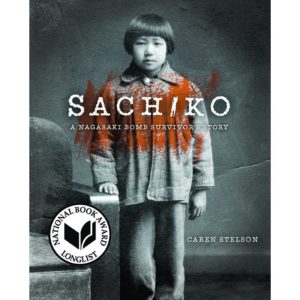 RVC: One of the things I admire about your work as an editor is how you’re not afraid of going right after tough topics, as readers encounter in Can I Touch Your Hair? Poems of Race, Mistakes, and Friendship, and Sachiko: A Nagasaki Bomb Survivor’s Story, to name just two examples. How do you negotiate the balance between what readers NEED and what readers WANT? And while we’re at it, let’s add in the challenge of what parents, teachers, and librarians think, too, right?
RVC: One of the things I admire about your work as an editor is how you’re not afraid of going right after tough topics, as readers encounter in Can I Touch Your Hair? Poems of Race, Mistakes, and Friendship, and Sachiko: A Nagasaki Bomb Survivor’s Story, to name just two examples. How do you negotiate the balance between what readers NEED and what readers WANT? And while we’re at it, let’s add in the challenge of what parents, teachers, and librarians think, too, right?
CH: Thank you, Ryan. With the books you mention, a couple of key things were not rushing the editorial process and incorporating the feedback of other people—both colleagues at Lerner and expert readers. I don’t think any one person is going to have perfect instincts for how to handle a challenging topic on the first draft or on the first read through a manuscript. But having time to sit with it, to read other, relevant writing on the topic, and to get feedback from fellow editors or consultants is enormously helpful.
Beyond that, we also need to be humble—the authors and I are going to do our best, but all books, especially those that grapple with topics not traditionally covered in children’s books, will still be criticized. Not every reader is going to be looking for the same thing from a book on a given topic, and we have to be okay with that, whether or not we agree with the criticism.
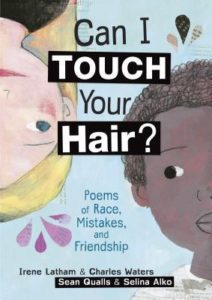 RVC: While Can I Touch Your Hair? has received a lot of critical praise, some readers are uncomfortable with parts of it—most specifically the poem called “The N‑Bomb.” That’s a prime example of what we’re talking about here, isn’t it?
RVC: While Can I Touch Your Hair? has received a lot of critical praise, some readers are uncomfortable with parts of it—most specifically the poem called “The N‑Bomb.” That’s a prime example of what we’re talking about here, isn’t it?
CH: Definitely. I think adults (particularly white adults) don’t give kids enough credit for what they can handle. This often comes out of a desire to protect kids from all the terrible things that are a part of our world. But we need to keep in mind that not all kids receive that protection, and we can’t control when a kid is going to first encounter something biased, racist, or hateful. To those adults who feel uncomfortable, I say: Isn’t it far better for a kid to encounter the N‑word (or some other “difficult” subject matter) for the first time in the pages of the book, when there’s time and space for a kid to think about it and talk with a trusted adult about it, rather than encountering it first in some other way when there might not be opportunity for thought and conversation?
For more, check out a blog post that Irene Latham, Charles Waters, and I wrote about this very topic.
RVC: Thanks for extending our conversation with the link to that informative post. Much appreciated!
Let’s move back into your work as an editor in general by asking a question few editors get asked. How do you measure success?
CH: Ultimately, success is a book reaching a young reader who appreciates it. And I want our books to get into the hands as many of those young readers as possible, which means connecting with the people who put books into kids’ hands—booksellers, educators, librarians, and parents.
RVC: How do you achieve such a thing?
CH: There are different routes to achieving this goal. It could be getting multiple starred reviews, winning one or more awards, getting on state reading lists, having an author who does a lot of school visits and events, or some other combination of things. Success isn’t always the moments we see on social media—and a whole lot of work and revision and doubt and hope go into every single book we make, with the goal of each book finding its own path to readers.
RVC: Since you brought up the idea of writers/books finding a path to readers … a lot of writers come to OPB to gain insight into how to improve their chances of selling a picture book manuscript, and sometimes that means investigating the submission process itself as much as talking about issues of craft. So, let’s help them out. Plenty of editors encounter phrases and words in cover letters and queries that are an absolute turn off. Got any to warn writers away from using with you?
CH: Ultimately, I’m a lot more interested in the manuscript than I am in the cover letter or query. That said, I’m turned off by bashing an entire category or genre because an author thinks their work is better than all of it, comments that the author’s child/neighbor/grandchild loves the story (because I need people who don’t already know and love the author to also love the story), and an obvious lack of knowledge about a certain genre or category (e.g. a 3,000-word picture book).
RVC: Let’s go with one more writer-friendly question. How has nonfiction changed over the years of your editing career, and what trends/shifts might we expect in 2020 and beyond?
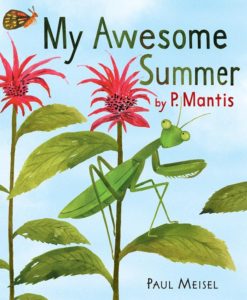 CH: Oooh, interesting question. There’s definitely more interest in STEM and STEAM topics and less interest in historical topics (unless the book is about a historical “hidden figure” of some sort). Animal life cycle books used to be a nonfiction staple, but I almost never see them anymore unless they have an innovative approach (such as My Awesome Summer by P. Mantis by Paul Meisel.)
CH: Oooh, interesting question. There’s definitely more interest in STEM and STEAM topics and less interest in historical topics (unless the book is about a historical “hidden figure” of some sort). Animal life cycle books used to be a nonfiction staple, but I almost never see them anymore unless they have an innovative approach (such as My Awesome Summer by P. Mantis by Paul Meisel.)
The last few years I’ve been thinking a lot about the different categories of nonfiction, as described by Melissa Stewart. For picture books, I’m seeing lots of narrative nonfiction, some really great expository literature, and a small amount of traditional nonfiction. (For more about nonfiction categories, check out Melissa’s blog and read her School Library Journal article on the topic.)
I’m also seeing a lot of interesting approaches to blending nonfiction and fiction. For instance, Flower Talk: How Flowers Use Color to Communicate by Sara Levine, illustrated by Masha D’yans is narrated by a cantankerous cactus, but the information conveyed is all true. I realize books like this can pose a challenge for librarians—where to shelve them?—but I also expect to be seeing more in this vein.
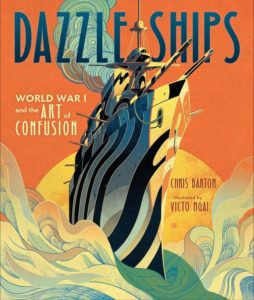 Word counts remain higher than for fiction. With narrative nonfiction, I generally go for 1,000 or fewer words in the main text, though Dazzle Ship: World War I and the Art of Confusion by Chris Barton is about 1,400 words and Let ’Er Buck!: George Fletcher, the People’s Champion by Vaunda Micheaux Nelson is 1,500 words. Expository literature typically has a lower word count, though a book with multiple levels of text (such as those in Jess Keating’s World of Weird Animals series) may go higher.
Word counts remain higher than for fiction. With narrative nonfiction, I generally go for 1,000 or fewer words in the main text, though Dazzle Ship: World War I and the Art of Confusion by Chris Barton is about 1,400 words and Let ’Er Buck!: George Fletcher, the People’s Champion by Vaunda Micheaux Nelson is 1,500 words. Expository literature typically has a lower word count, though a book with multiple levels of text (such as those in Jess Keating’s World of Weird Animals series) may go higher.
Including back matter and providing sources has become increasingly essential, and I’m enjoying just what a wide range of elements authors are including in back matter. Different topics will necessarily be served by different back matter.
Incremental but important progress has been made in publishing picture books by and about BIPOC and people from other marginalized backgrounds (and those books being recognized with starred reviewed and awards), and it’s my belief that this is not a trend but rather part of a permanent, ongoing shift.
Overall, I believe it’s a great time to be making nonfiction. There’s so much room for creativity and experimentation in terms of both format and topic, and I am inspired by all the great nonfiction I’m seeing out there!
RVC: A few years back, you (delightfully) interviewed your own kids on the Lerner Books blog. I’d like to wrap up the first part of this interview with variations on three of the questions you asked them. Here we go.
#1—What do you like best about being a mom who is a children’s book editor?
CH: I love that what I do in my job has such a meaningful connection with being a parent: my experiences with my kids inform my work and my experiences with making books inform the way I raise my children. I also think that the act of reading picture books aloud is incredibly powerful, and doing so night after night after night can’t help but shape my understanding of how to make a great picture book.
RVC: #2—What’s your favorite picture book to have worked on?
CH: All of them! That’s a valid answer, right? Truly, I love the books we publish and feel so lucky to be able to work with such incredible authors and illustrators.
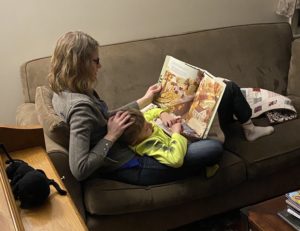 If I had to pick a picture book that has had particular meaning for both me and my kids this year, I would choose A Map into the World by Kao Kalia Yang, illustrated by Seo Kim. My 6‑year-old son loves it [OPB Note: Carol was kind enough to provide a snapshot of her and the aforementioned son enjoying that very book!], and we’ve been reading it multiple times a week for months now. Although it’s a book I completely adore, I was surprised to see it have such staying power for him. This blog post shares more of the story behind the book and how it has led to some very meaningful connections for both of my kids.
If I had to pick a picture book that has had particular meaning for both me and my kids this year, I would choose A Map into the World by Kao Kalia Yang, illustrated by Seo Kim. My 6‑year-old son loves it [OPB Note: Carol was kind enough to provide a snapshot of her and the aforementioned son enjoying that very book!], and we’ve been reading it multiple times a week for months now. Although it’s a book I completely adore, I was surprised to see it have such staying power for him. This blog post shares more of the story behind the book and how it has led to some very meaningful connections for both of my kids.
RVC: #3—How many picture books have you read them in their lives?
CH: Oh, probably a couple thousand.
RVC: That’s a good answer, Carol, but it’s wrong. According to child #2, it’s 5,952. But you were close!
And now, we move on to the SPEED ROUND where the point values are doubled, and the answers will zing as fast as the answers zoom. READY?
CH: You betcha!
RVC: Best place in Minneapolis to get hot dish?
CH: Probably in a church basement or at someone’s home! Instead, I’d like to recommend the fantastic fry bread tacos at the Four Sisters Farmers Market. I went there on a day last fall when illustrator Marlena Myles was signing copies of Thanku: Poems of Gratitude with the Hennepin County library system, and there I discovered that books and fry bread tacos are a great combination! (Though you do need to be careful not to spill on your book…)
RVC: Favorite late-night reading beverage?
CH: Water.
RVC: Who’d you most like to edit a picture book from? LeBron James, Kim Kardashian, or Ariana Grande?
CH: Hahaha! Whichever one of them has spent the last 5+ years reading recently published picture books, drafting multiple manuscripts, and working with a critique group as they honed their writing skills—and would respect my editorial input. 😉
RVC: A Lerner picture book that’s totally awesome yet somehow underappreciated?
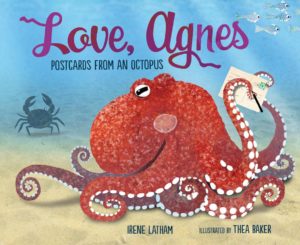 CH: Love, Agnes: Postcards from an Octopus by Irene Latham, illustrated by Thea Baker. It’s an innovative look at the giant Pacific Octopus life cycle as portrayed via a series of postcards exchanged by Agnes, various other sea creatures, and a boy on land. It’s clever and charming, whether you’re primarily interested in the storyline or in the octopus facts!
CH: Love, Agnes: Postcards from an Octopus by Irene Latham, illustrated by Thea Baker. It’s an innovative look at the giant Pacific Octopus life cycle as portrayed via a series of postcards exchanged by Agnes, various other sea creatures, and a boy on land. It’s clever and charming, whether you’re primarily interested in the storyline or in the octopus facts!
RVC: The coolest picture book of 2019 that wasn’t edited by someone named Carol is …
CH: Gah, this is so hard! I’m going to cheat and break this into a few categories.
For fiction, I’d have to say Home in the Woods by Eliza Wheeler. Every aspect is so well done, and the text, the illustrations, and the design work wonderfully together to create a cohesive whole. Both of my kids also love it!
For nonfiction, I’m going to go with The Undefeated by Kwame Alexander, illustrated by Kadir Nelson. When I first saw the book, I thought it was gorgeous but perhaps too sophisticated for a young audience. But when I brought it home and read it to my younger son, he was very engaged. While he and I had previously talked about race in different ways, we’d not talked much about systemic racism and the long history of racial injustice in the United States, and this book opened the door to some really powerful conversations.
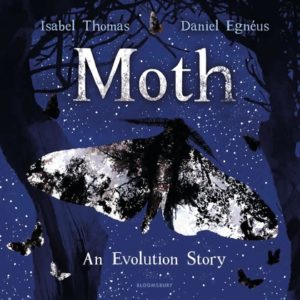 For a science-themed picture book, I’d say Moth: An Evolution Story by Isabel Thomas, illustrated by Daniel Egnéus. I’d been hearing good things about it and finally got it from the library. My 6‑year-old son and I both learned a lot! It is such a clear presentation of a complex idea, and the illustrations are fantastic as well.
For a science-themed picture book, I’d say Moth: An Evolution Story by Isabel Thomas, illustrated by Daniel Egnéus. I’d been hearing good things about it and finally got it from the library. My 6‑year-old son and I both learned a lot! It is such a clear presentation of a complex idea, and the illustrations are fantastic as well.
RVC: Sum up your picture book philosophy in three words.
CH: Make me care.
(By which I mean that you the author start off invested in the story you’re telling or the topic you’re writing about. But your readers may not be invested in the same way, so you need to find a way to make me–and all readers–care about it.)
RVC: Thanks so much, Carol! This was a sincere pleasure.


Fun interview, Ryan and Carol.
So much to digest about Carol C Hinz and the books she’s edited and recommends. The big question to consider: how to make others care about my book MC like I do.
Pingback: “…the balance between what readers NEED and what readers WANT” – Bartography
Great interview! And as an author, I LOVE working with Carol–she’s wonderful! Excited that our first book, PLAY LIKE AN ANIMAL, will be released in April.
Hi, Maria–I’m not at all surprised that you’ve had a good experience with her. Carol seems terrific in every way. Good luck with PLAY LIKE AN ANIMAL!